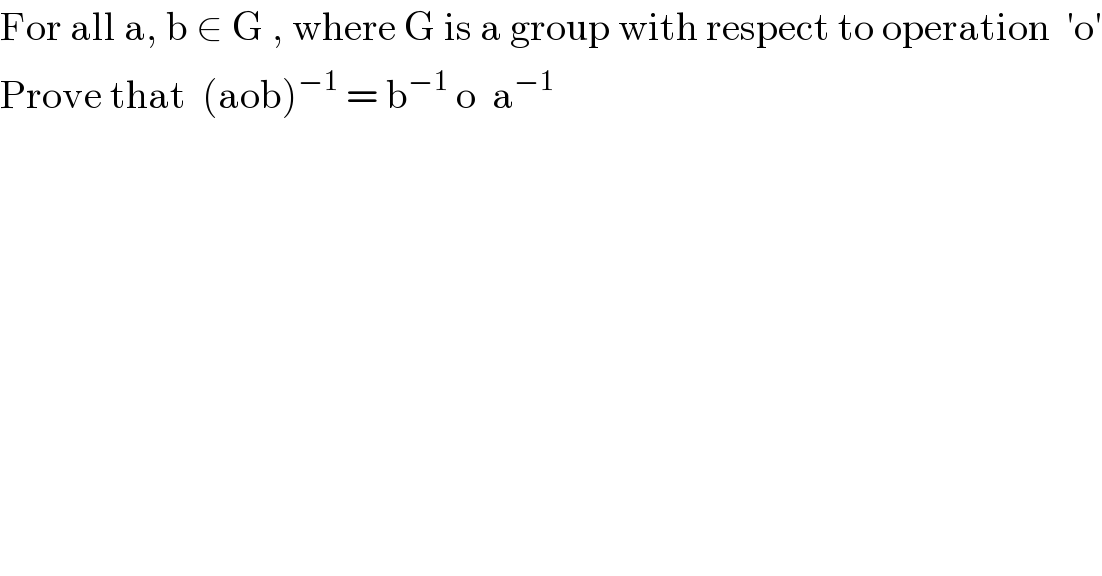
Question and Answers Forum
Previous in Relation and Functions Next in Relation and Functions
Question Number 14353 by tawa tawa last updated on 30/May/17

Commented by Tinkutara last updated on 31/May/17

Commented by tawa tawa last updated on 31/May/17

Commented by Tinkutara last updated on 01/Jun/17
![We have to show that (aob)o(b^(−1) oa^(−1) ) = I_G = (b^(−1) oa^(−1) )(aob) ⇒ (aob)o(b^(−1) oa^(−1) ) = ao(bob^(−1) )oa^(−1) = (aoI_G )oa^(−1) = aoa^(−1) = I_G Similarly you can prove the other part. [Here it is not needed to prove that aoa^(−1) = bob^(−1) = I_G , identity functions on G]](Q14466.png)
